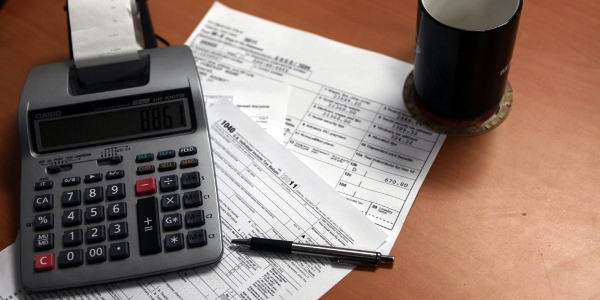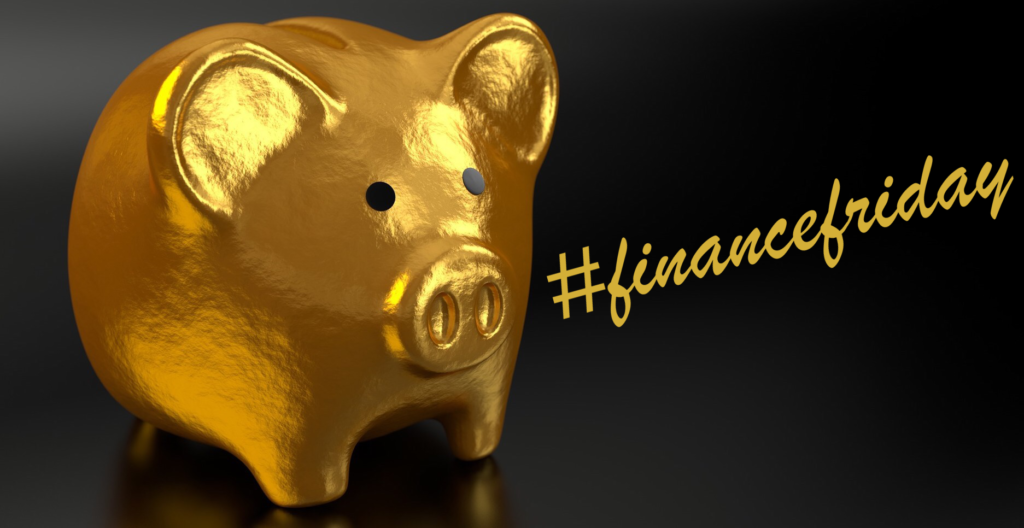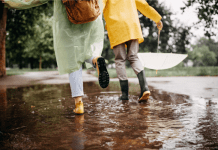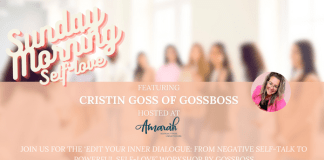With all the changes to tax law that will be implemented when filing 2018 taxes, many folks will see an increase in their return. In fact, financial giant, Morgan Stanley estimates that the average tax refund will see a 26% increase for the 2018 tax season. Curious what your return will be? Check out this return calculator from NerdWallet. It’s not 100% percent accurate, but should give you an idea of what you’ll be getting back this year.
Hire a tax professional
As always, I suggest spending the dough to hire a professional to do your taxes in order to get the most out of your return. While the new tax laws are supposed to make filing easier for the average human, hiring a tax professional is one of those things that we ALWAYS make room for in our budget. If you choose to hire a tax professional, know that the cost will be deductible on next year’s (2019) taxes, and that your 2017 service fees for using a tax professional are deductible on this year’s (2018) taxes.
Plan ahead
Once you have an idea of what your return will be, you can start planning for the influx of funds you’ll hopefully be receiving. I said this in last year’s post about tax season, plan ahead. Even if you are unsure of what your return will look like, you can still spend some time planning so that you don’t spend the extra cash wastefully. Make a list of the things you want and need to do with your refund and give each item a dollar amount. This will make it easier to see what you can get for your money when your tax return comes in. For example, you might be able to pay a car off for $2500 OR you could take a vacation for $1000, buy the new tires you need for your car for $800, and put away the remaining in savings for emergency funds. Once your refund arrives, you can easily look at your wish list and prioritize your spending based on your family’s needs.
Last year, we talked about #adulting with your refund dollars, and frankly this is still going to come in as top priority on my list. Getting a decent influx of funds is an excellent opportunity to start working towards financial freedom and debt-free living, or just getting enough ahead to lose the #moneystress in your life. Last year, we paid off one of our vehicles. This year, we hope to pay off the secondary vehicle, as well as buy it some much needed new tires. Losing these two payments will have allowed us to remove over $700 a month from our budget. While paying them off isn’t the most fun way to use our funds, it will free up a significant amount of cash on a monthly basis going forward.
Since we talked about listing your tax refund options earlier, we’ll do this a bit differently this time around, but we’ll still stay within the categories of #adulting and #havingfun. With any luck, you may be able to pick a few items from both categories. So get your pen and paper (and your coffee) – it’s tax time!

#adulting
Get financially free. Last year we talked about Dave Ramsey’s steps to personal financial freedom, and while I’m still a fan of Dave’s ideals about money, I have to admit that they are just that, ideals. The average person is going to carry some debt. That’s just how it is in this day and age. Houses are more expensive, cars are more expensive, phones are more expensive, but the average salary really hasn’t increased to match this. So I’ll propose a twist on Dave’s suggestions – pay off some bills, wisely.
The debt snowball is a fantastic idea. Get rid of the debts with the highest interest to save yourself a little extra cash in the long run, however, it’s not necessarily the best course of action to throw your spare funds at paying off a huge debt (like your home or your car, if its a newer model and still has a significant amount owed). Be wise and choose the debts that will help you gain back some of your monthly budget sooner, so that you can then use that extra wiggle room in your budget to remove more debt. Be reasonable in your expectations. Paying off debt and becoming “financially free” is a marathon, not a sprint.
Open a PA 529 for your kid(s). This one is a repeat from my previous post, but such a great idea. These accounts receive a number of tax breaks to encourage contributions, and are a great way to save for college or technical school, as well as any qualified expenses. Learn more on the PA529 website.
Are you self employed? Invest in an SEP IRA. These accounts are designed specifically for those who are self-employed and can be a bit complicated to navigate. You’ll want to find a qualified financial planner to help you out with this one, but again, this will earn you some tax breaks on your 2019 taxes. Check out the official IRS guidelines for SEP IRAs to learn more.
Also for the self-employed, get organized to get more back. If you’re running your own business, its in your best interest to take some time (and money) to get organized. The expense here lies in your means of organization. I suggest that you invest in something like QuickBooks Self Employed to help you track income, mileage, and expenses, and earn more back on your taxes next year. The app is super handy and allows me to quickly enter my expenses and receipts for future write-offs. Investing $10 a month now, may earn you back some extra next tax season. Use my referral code to get half-off for the first 6 months (making it only $90 for the first year). It’s like your own personal accountant, in your pocket.
All of the options offered above a more long-term planning, but what about short term ideas? I’ve got those too.
Start a short term savings challenge or a Christmas fund. You can always use your refund to kick off a savings challenge or pad a Christmas fund for the upcoming holiday season. First, choose a savings goal. This can be based on a purchase you’d like to make or just an arbitrary number. Use a chunk of your tax funds to start your “savings” account and then divide the remainder of the amount you’d like to save by your time constraint. For example, if I wanted to save $1000 in 12 months, I might take $400 of my tax refund to start my account and then divide the remaining $600 by 12 months, leaving $50 a month to reach my goal. You can then divide this up into smaller weekly deposits so you don’t notice the funds leaving your regular account.
There are also some great savings apps that can help you create a nest egg by identifying extra funds in your account and transferring them to a savings account. NerdWallet does a great job of explaining the benefits of each app in this article.

Had enough of #adulting…? Let’s move on to the fun options.
#havefun
Buy a lottery ticket – not. So I read an article recently that suggested using $50 of your tax refund to buy lottery tickets. Let me just say – um, no. This one is not on my list. Want to spend $50? Get yourself a spa pedicure or buy one of those crazy expensive boxes of macarons and have them shipped to your house. This way you’re guaranteed something other than a losing lottery ticket in return.
Take a mini-vacation. Want to do something fun but don’t want to use your entire refund? Take a mini-vacation. Spend a weekend at an indoor water park like Kalahari or one of the many Great Wolf Lodges with the kids. Better yet, go midweek and save a few more dollars. A vacation doesn’t have to be super expensive, but if you’d rather break the bank…

Go on a mega-vacation. This is not your two-day, weekend mini-vacation we talked about above. This falls into the category of once-in-a-lifetime adventures. Book a Disney vacation, rent an RV and drive, or go abroad and introduce the kids to new cultures. Obviously this is completely dependent on the amount of money you get back from your refund, but don’t be afraid to treat yourself, and your family, and have some #bigfun.
Buy something nice for yourself. When was the last time you bought something you really wanted? New clothes, a pair of expensive heels, a nice purse – whatever your flavor of fun is, get yourself something you will truly appreciate and enjoy. I’m not suggesting you spend the whole refund on this, but be kind to yourself.















